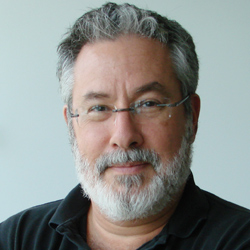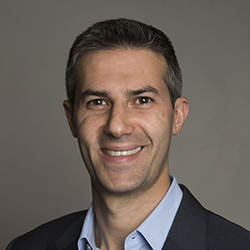Interdisciplinary Teams Present New Solutions in Computational Journalism
Ten teams presented their final projects that explored collaboration between reporting and computer science
The importance of journalism has never been greater. Whether it’s reporting on the day’s biggest political story, how COVID-19 is impacting communities, or how inequities are shaping the world, reporters and news outlets play a crucial role in informing the public.
Technology and artificial intelligence (AI) can help.

On Tuesday, June 1, 10 teams from Projects in Technology and Journalism, an interdisciplinary course bringing together students from Northwestern Engineering; the Medill School of Journalism, Media, Integrated Marketing Communications; and the School of Communication presented their final projects. In a course that dates back more than a decade, the teams collaborated on the design and development of proposals in computational journalism, building working prototypes to explore possible use cases, editorial models, and technology architectures.
The course is affiliated with the Northwestern University Knight Lab, a community of designers, developers, students, and educators working on experiments designed to push journalism into new spaces.
“The real heart of the class is the idea that any journalism is stronger through collaboration with computer science,” said Jeremy Gilbert, Knight Professor in Digital Media Strategy at Medill. “What we have been exploring over the last 10 weeks are the ways that different techniques from computer science – especially artificial intelligence – can benefit journalism.”

One example that benefits both journalists and their audience was the “Making News Accessible” project. This group created a tool that generates suggestions for how to simplify longer pieces into shorter and more digestible articles.
Features include flagging overly complex wording, pop-ups to learn more, customizable detectors, and suggested replacements. The purpose is to increase news literacy for people at lower reading levels while helping outlets reach a wider audience, and also to save editors time and effort.
“Journalism is inaccessible for lots of different people,” said Rebecca Klein, a Medill graduate student. “One of the best ways to make this content accessible is to pare down a story to its most essential elements through plain language.”
Another prototype showcased, called “Partisanship Detector,” uses a deep-learning model to reveal partisan word choices to help make political journalists aware of possible bias in their news writing. Though they may not be conscious of it, writers can make word choices that betray their biases.
Like Grammarly, an online implement where writers run their work through an AI-writing assistant to clean up grammar and other common errors, Partisanship Detector sends writers an email assessing whether the piece is biased, including suggestions about how to phrase the article in more neutral terms. The message also highlights terms and word usage that contributed to that judgment.
“It’s really trained on the data we fed it,” said Spencer Hong, a chemical and biological engineering PhD student. “Although our technology allows us to handle context in a lot of different ways, we’re really just at the mercy of the data.”
The other projects were:
- Compared to What: Contextualizes local reporting on COVID-19 by automatically identifying comparable counties based on demographic data.
- Hero, Villain, or Victim: A reputation management platform that tracks how major figures are being portrayed in the news.
- Local News/Next Door: Curate the best of Nextdoor posts to help reporters find newsworthy local leads.
- Local News Tracker: Identifies which neighborhoods are being under/over reported by mapping hyper-local articles.
- Peanut Gallery: Find relevant Tweets related to a news story you’re reading.
- Ride On Time: Personalizes a podcast playlist to fit a user’s morning commute.
- What’s New/Different: Aids news readers to understand the critical differences between two similar articles.
- What Are They Talking About? Helps news producers understand how left and right-leaning news outlets are framing news stories on the same topic.
“This class is just the tip of the iceberg at the intersection between media and journalism, and technology,” said Larry Birnbaum, professor of computer science at the McCormick School of Engineering. “This is really an area where Northwestern has tremendous student and faculty engagement. The class really exemplifies Northwestern’s commitment to interdisciplinary scholarship and teaching.”